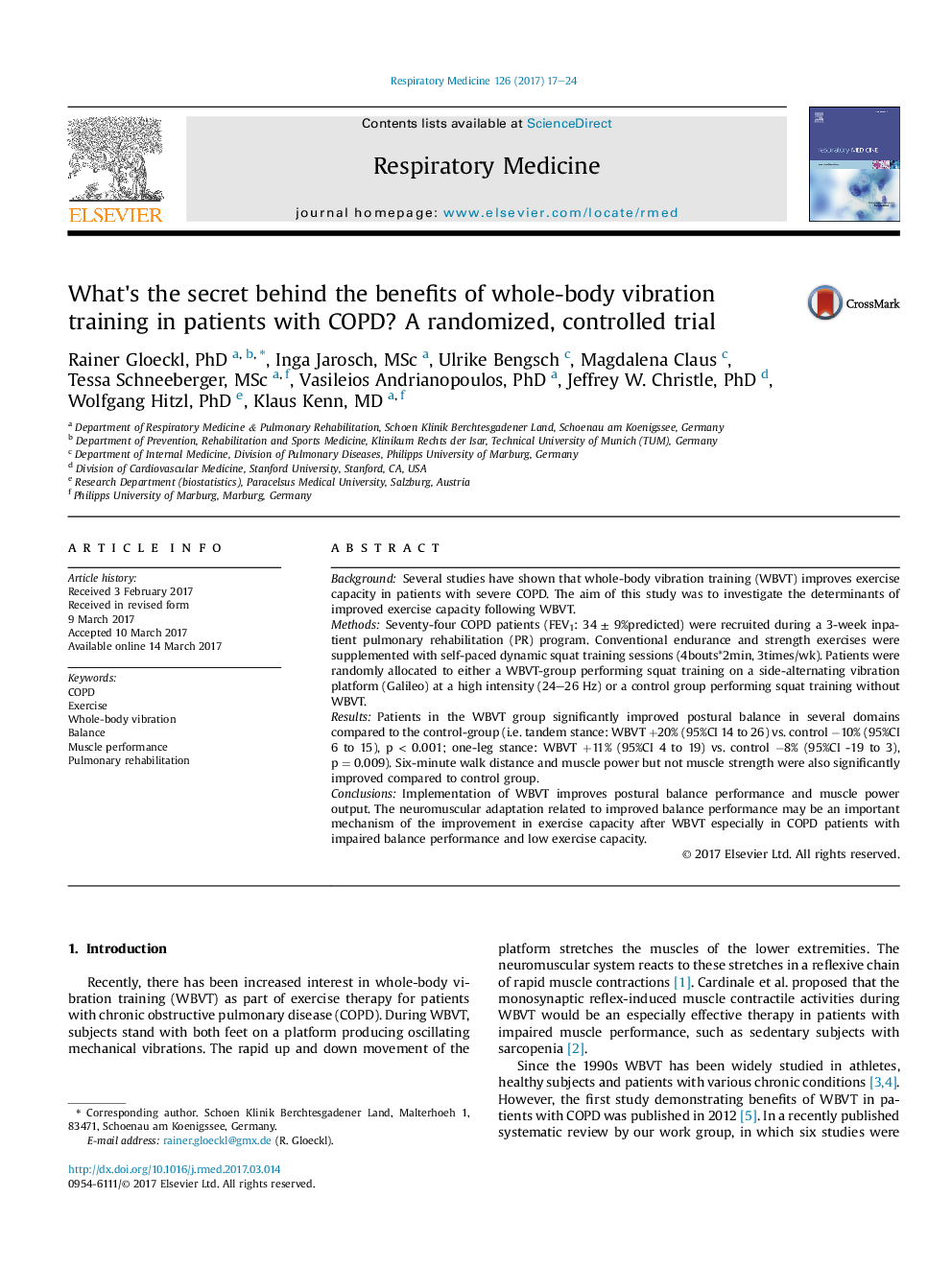| Article ID | Journal | Published Year | Pages | File Type |
|---|---|---|---|---|
| 5724986 | Respiratory Medicine | 2017 | 8 Pages |
â¢Whole body vibration training (WBVT) can improve exercise capacity in COPD.â¢The secret lies particularly in an improved balance performance.â¢Patients with impaired balance performance benefit the most from WBVT.â¢WBVT can be recommended as an additional modality during Pulmonary Rehabilitation.
BackgroundSeveral studies have shown that whole-body vibration training (WBVT) improves exercise capacity in patients with severe COPD. The aim of this study was to investigate the determinants of improved exercise capacity following WBVT.MethodsSeventy-four COPD patients (FEV1: 34 ± 9%predicted) were recruited during a 3-week inpatient pulmonary rehabilitation (PR) program. Conventional endurance and strength exercises were supplemented with self-paced dynamic squat training sessions (4bouts*2min, 3times/wk). Patients were randomly allocated to either a WBVT-group performing squat training on a side-alternating vibration platform (Galileo) at a high intensity (24-26 Hz) or a control group performing squat training without WBVT.ResultsPatients in the WBVT group significantly improved postural balance in several domains compared to the control-group (i.e. tandem stance: WBVT +20% (95%CI 14 to 26) vs. control â10% (95%CI 6 to 15), p < 0.001; one-leg stance: WBVT +11% (95%CI 4 to 19) vs. control â8% (95%CI -19 to 3), p = 0.009). Six-minute walk distance and muscle power but not muscle strength were also significantly improved compared to control group.ConclusionsImplementation of WBVT improves postural balance performance and muscle power output. The neuromuscular adaptation related to improved balance performance may be an important mechanism of the improvement in exercise capacity after WBVT especially in COPD patients with impaired balance performance and low exercise capacity.
